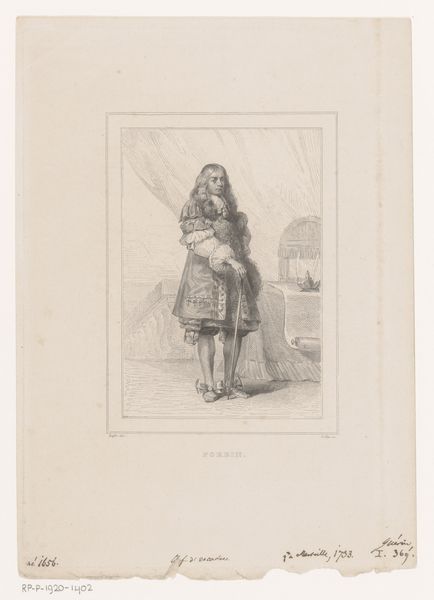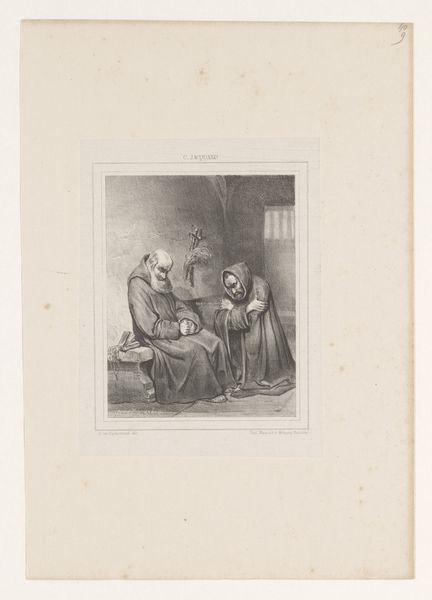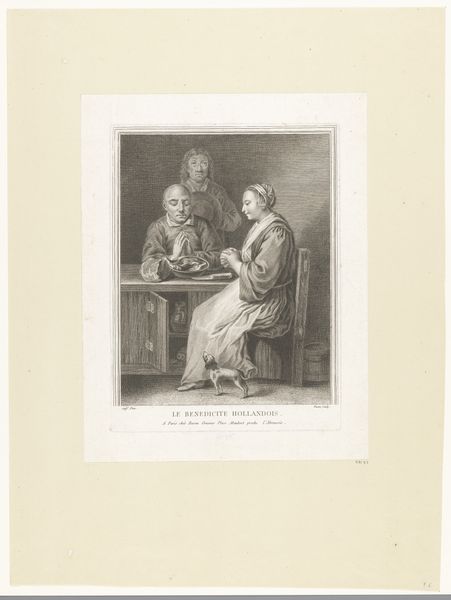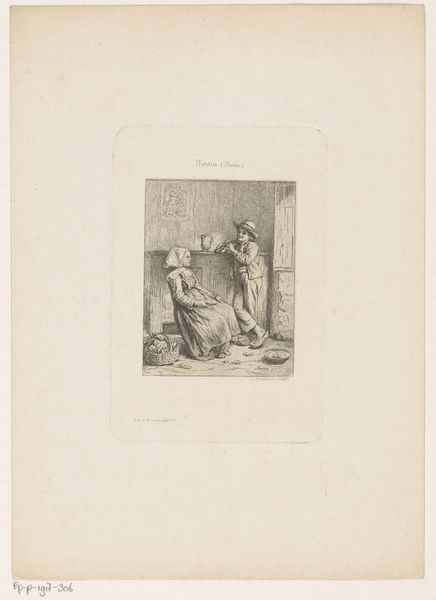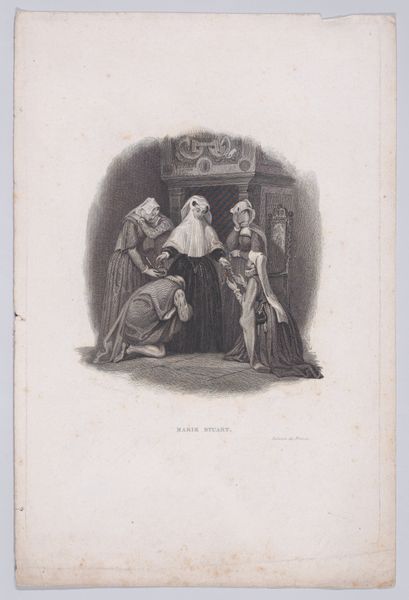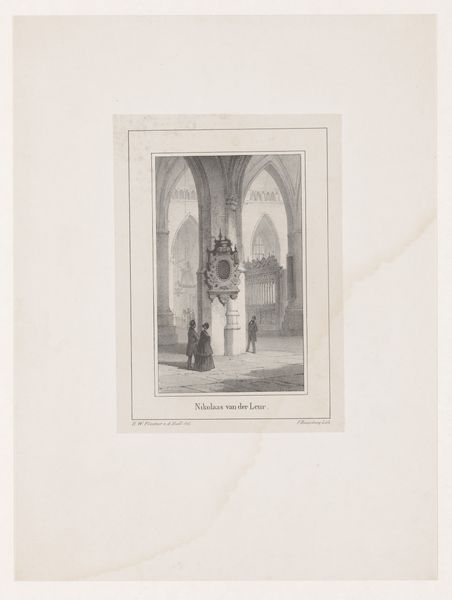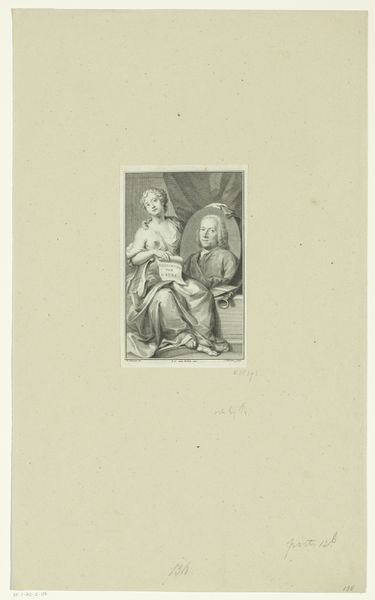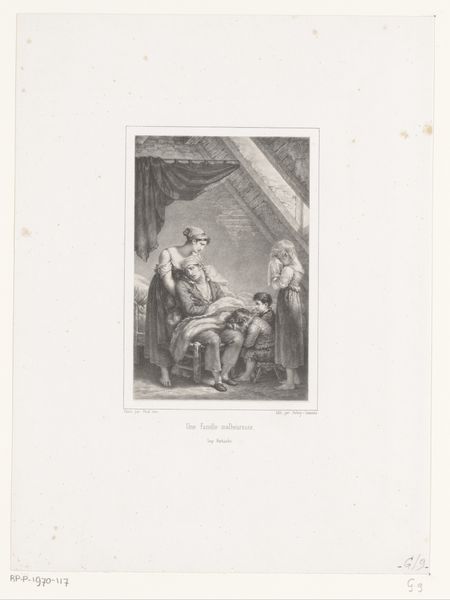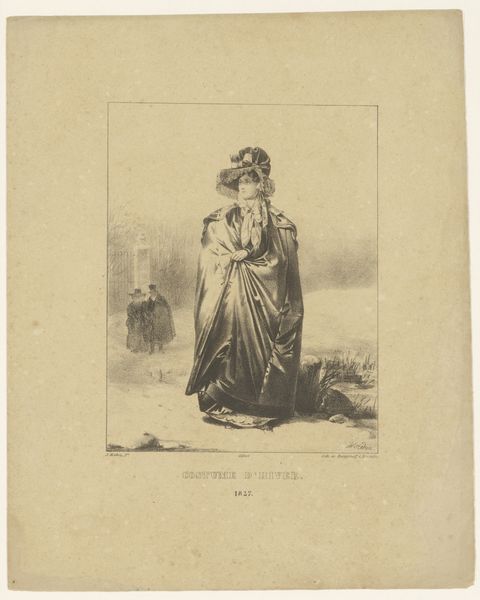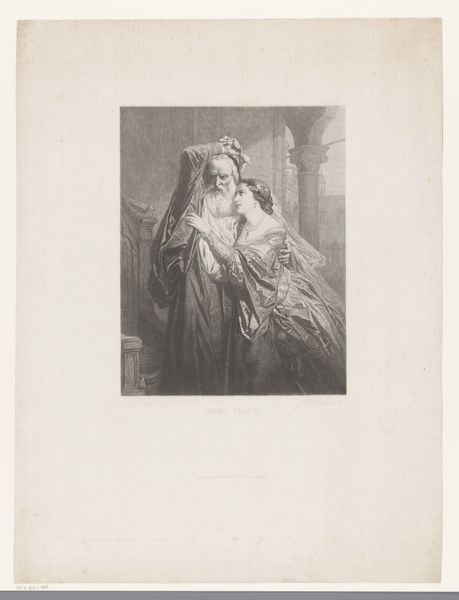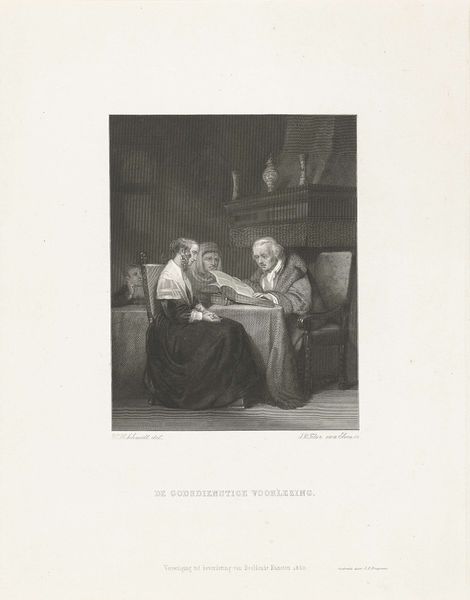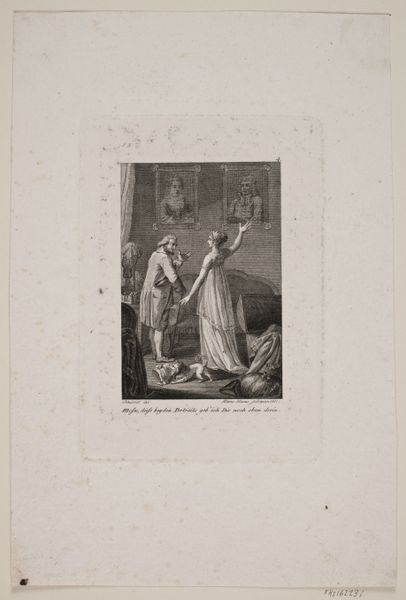
print, engraving
#
portrait
# print
#
old engraving style
#
archive photography
#
history-painting
#
academic-art
#
engraving
Dimensions: height 387 mm, width 247 mm
Copyright: Rijks Museum: Open Domain
This print of Heilige Elisabeth van Thüringen was made by Alexander Rordorf sometime in the 19th century. It’s made from a humble material, paper, but the technique used to create this image – engraving – is anything but. Look closely, and you can see it is composed of thousands of tiny lines incised into a metal plate, which would then have been inked and pressed onto the page. This was a skilled, laborious process, requiring years of training and a steady hand. The result is an image with remarkable tonal range and detail. Note how Rordorf uses line weights to create a sense of depth and volume, particularly in the folds of Elisabeth’s robes and the delicate flowers she carries. Though not made from precious materials, this print demonstrates the value of skilled work, and offers insight into the complex relationship between artistic production and the social and religious values it represents.
Comments
No comments
Be the first to comment and join the conversation on the ultimate creative platform.
